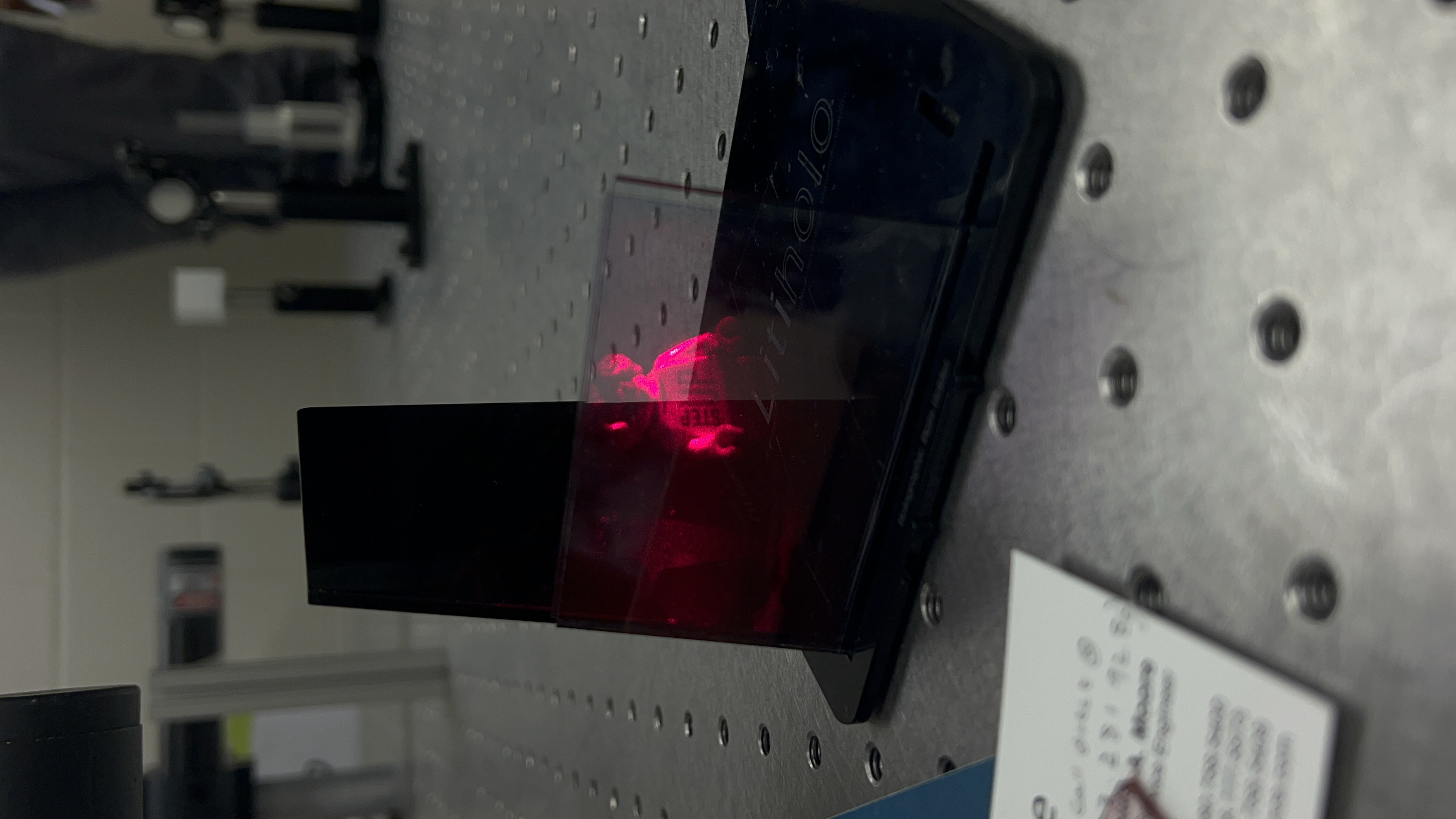Quantum Holography
By Lindsay Hwang, Aditya Sengar
Holography is a method of representing a 3D object in a 2D way. Classical holography exists in many forms, from transmission to rainbow. However, quantum holography is much rarer, in which it uses quantum entanglement, where the state of one particle becomes inextricably linked with another's, regardless of spatial separation, to create a hologram. In our experiment, we first created a classical transmission hologram using the LitiHolo hologram kit, imprinting the object's information on a holographic plate. We then created an experimental setup for our quantum hologram, with a laser pointed at a ppKTP crystal that would perform spontaneous parametric down conversion (SPDC). This allows for the two beams, which usually recombine in classical holography, to never combine following their split while creating the hologram. We believe that there is a promising future for this project later on, as we have established both a setup and a connection with Sebastian Töpfer, the lead researcher in the quantum holography paper that our experiment is based on. As for this project's implications, as quantum holography continues to evolve, it promises transformative breakthroughs in the biomedical field in internal imaging and holography overall.
Files and Resources
Files are coming soon!
Photo Gallery






Updates
June 3, 2024
Introduction to Holography:
Holography is a method to represent a three-dimensional object in two dimensions, relying on the principle of interference between the object and the light source. While traditional holography uses two beams that recombine at a camera or plate to form the hologram, our research focuses on quantum holography. This advanced approach utilizes quantum entanglement, allowing the beams to remain completely separate throughout the process. Our research is based on the paper "Quantum Holography with Undetected Light" by Töpfer et al.
Accomplishments:
Transmission Hologram: We created a transmission hologram using a LitHolo kit. By placing a laser at one end and a Lego figurine at the other, with a holographic film plate behind the object, we captured the interference pattern to produce the hologram.
Quantum Holography Setup: We developed an experimental setup based on Töpfer's work, using a ppKTP crystal to perform spontaneous parametric down-conversion (SPDC) to generate quantum entangled photons.
Our Progress
We made significant strides in our project: Research Connections: Established connections with leading researchers like Sebastian Töpfer. Resource Compilation: Compiled a comprehensive materials list. Experimental Setup: Firmly established and optimized our experimental setup. We simplified the quantum holography setup by streamlining optical paths, consolidating pump, signal, and idler beams into fewer, more direct routes. This not only reduced costs but also enhanced operational efficiency.
Our work marks a significant achievement, as this process has never been replicated in a high school setting before. We look forward to continuing our research and exploring the vast potential of quantum holography.
